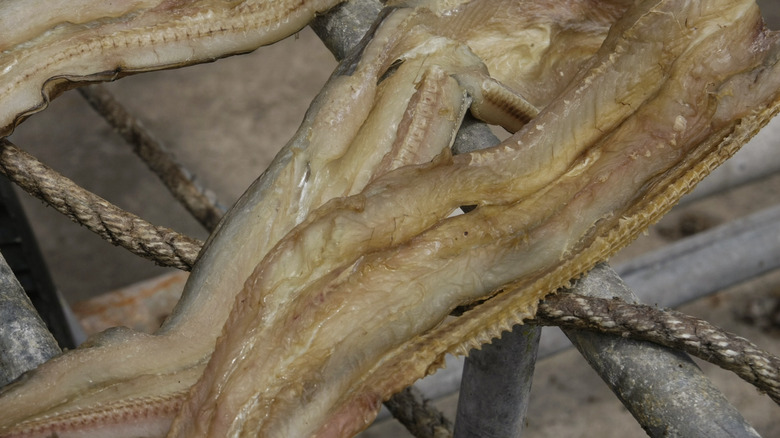The Traditional Alaskan Foods That Can Be Dangerous To Can
Alaska holds the title of being the largest U.S. state, with more landmass than Texas and California combined, per World Atlas. It is a state iconic for its wild landscapes and for the hardy, strong-willed people who populate it. There is much in Alaskan cuisine to be loved. From an ancient form of ice cream to the most flavorful salmon you can find, Alaska is a state brimming with delectable eating possibilities.
There is another cooking culture in Alaska that is relatively unknown. It is the arctic diet of the native people, a Gastronomica writer says is being lost (via JSTOR). The diet of native Alaska was based on subsistence living, meaning essentially that no commercial products were available so wild resources had to be used. Cooking methods developed that were innovative and sophisticated, including early methods of preservation and fermentation. Unfortunately, when not done properly, some of these traditional foods can lead to a food preserver's worst nightmare — botulism.
Stick to tradition and avoid botulism
According to the CDC, between 1950 and 2017, 350 Alaskans got botulism, and 24 died as a result. The government organization listed the following foods as potentially dangerous — fermented fish heads, fermented fish eggs, fermented beaver tail, fermented seal flipper, fermented walrus flipper, fermented whale, seal oil, and dried, unsalted fish. All of the cases of Alaskan botulism were traced back to one of these foods.
The Mayo Clinic defines botulism as "a rare but serious condition caused by a toxin that attacks the body's nerves." The Alaskan cases were all examples of food-borne botulism, which can be linked to foods that have been improperly canned or preserved. The CDC advises those who are making the listed foods to stick with the traditional, native methods of preservation and to never use plastic or glass containers. Botulism grows in places that have little to no air circulation.
The health organization also recommends allowing these traditional foods to be fermented in the cold with plenty of moving air is key to preventing the poison from appearing. Therefore, attempting to apply modern canning techniques to ancient methods of preservation could more than likely lead to something potentially life-threatening.

